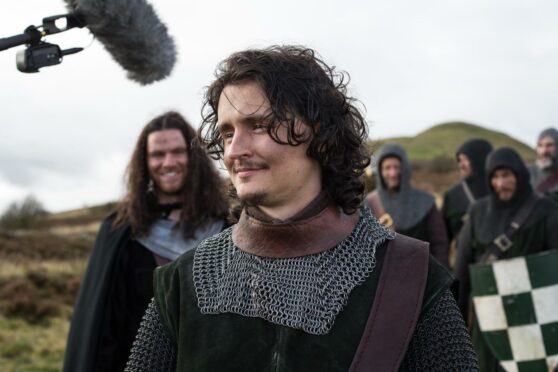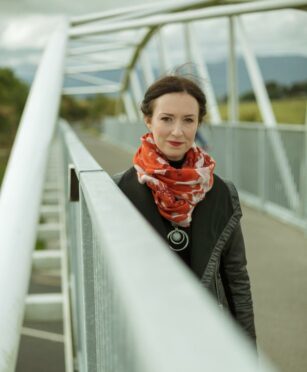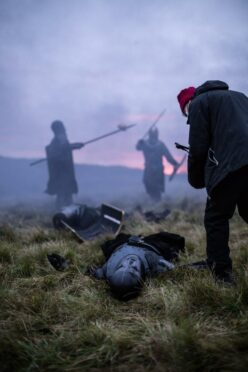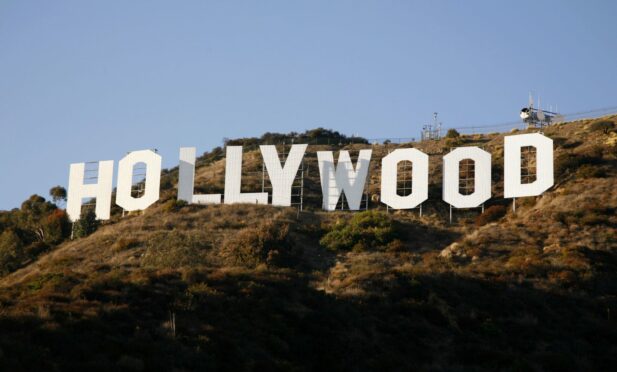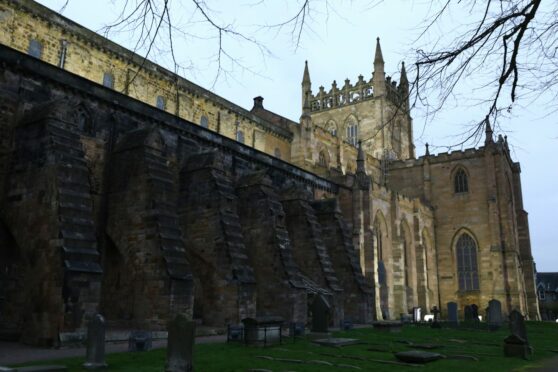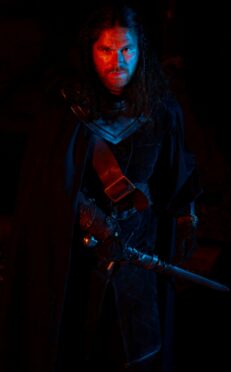Well, it’s happening. The sickly-sweet smell of pumpkin spice syrup is in the air, fun-size Milky Ways are back on the shelves and quotes from Practical Magic are peppering social media. It can mean only one thing – Halloween.
And as the spookiest day of the year approaches and horror fans gear up to binge the goriest and ghastliest movies around, where better to look for a behind-the-scenes insight into movie magic than the indie horror studio right on our doorstep?
Hex Studios, based in Kirkcaldy, is an exciting independent outfit which has produced six feature-length horror films, including Lord Of Tears and The Devil’s Machine.
Now the studio is forging a new path, with fantasy epic Dragon Knight set to delight fans of classics such as Conan The Barbarian and Excalibur.
The question is, can these movie-making guys and ghouls turn from murder to magic? Screenwriter and Hex Studios co-founder Sarah Daly reckons the genres have a fair bit in common.
Making fantasy a reality with help from ordinary folks
“We’d done a number of horror films before we came up with this film and we felt like we wanted a bit of a change,” she explains. “So although there are still horror elements in this, it’s essentially a fantasy film.”
The project, like many independent film ventures, is funded by backers on Kickstarter. This allows ordinary people can back projects they want to see brought to fruition. Throughout the process, backers are rewarded for their help with special features such as merchandise, preview material or extras.
The Dragon Knight Kickstarter recently surpassed its £70,000 goal, with a whopping 516 backers showing that the appetite for dark fantasy is alive and well.
“Obviously fantasy is a bit of a diversion for us, having done horror previously, so we didn’t know how much crossover there would be between our past backers and fans,” Sarah says.
“But people really came out and supported it. These are tough times for everyone so it really means a lot to know that people are supporting what we do and that they are excited for the project.”
The concept for the film – a lone knight trying to find the “last dragon” to help him against his foes in a quest to defeat the “evil enemy” in the dystopian lands of Agonos – came about “pretty organically” at the beginning of 2020, according to Sarah.
And when asked, “Why a dragon knight?” her answer is refreshingly straightforward: “The best fantasy films have dragons, don’t they?”
Demystifying movie-making
It’s clear that the Hex team are true fantasy and horror fans themselves, driven by fully geeked-out enthusiasm for genres which have gained cult followings for generations.
And unlike the big-name US studios, Hex are all about demystifying the filmmaking process.
“Lawrie Brewster, who runs Hex with me, and I will work on the concepts in the beginning,” Sarah explains.
“And for this one, it was very much a classic fantasy story that we wanted to tell. So you’ve got your hero, your sidekick, your villains, your quest. We wanted to create a fantasy tale like the ones you would’ve seen in the ‘80s or ‘90s. Something quite retro and nostalgic.”
After the initial concept was mapped out, Sarah went off to write the script – and completed her task in an impressive two months!
“It normally takes about four weeks to write a first draft. Then you keep rewriting it until it’s the best you think it can be,” she says modestly.
“It sounds quick, but when you think about it, there’s about 90 pages in a script, and it’s quite easy to write five or even sometimes 10 pages in a day, because of the type of writing that it is. So a first draft is usually pretty quick – the hard part is polishing it.”
Fife – the LA of the UK?
You might think that to make a movie these days, you need to jet off to Hollywood and track down a studio exec to put stars in your eyes.
But LA only became the film capital of the world in the first place because of the incredible variety of landscapes that California’s coast had to offer. The state has mountains and deserts to beaches and forests, all within a few miles of one another.
And after working on larger, more mainstream films in LA in the past, both Sarah and Lawrie gave up the sun and surf to return to Fife.
“You get to have a lot more creative control over what you do in an independent studio, which is so important,” Sarah explains.
“I’ve worked on more mainstream things in the past. You do feel a bit like a cog in a machine. You lose that creative passion and input.
“And then it just starts to feel like a normal job – but a very difficult normal job.
“But there’s just something special about being able to create your own vision with fewer compromises. We feel like the films we make are our passion projects. They’re the stories we want to tell and we can feel ownership of them.”
And, according to Sarah, Hex doesn’t need LA’s landscapes – Fife has everything they could want.
“Everything we need is within about a 45-minute drive,” she says.
“We’ve got various forests, sand dunes, castles, ruins – pretty much every landscape you could imagine. So it’s actually a perfect spot to be based in, for us.
“With this film, for example, we were in Dunfermline, Cupar, St Andrews, Elie… all over the place! Just getting the most out of what is available on our doorstep, which is – luckily – a lot!”
One standout moment from filming the Dragon Knight for Sarah was a battle scene shot with historic Dunfermline Abbey as a dramatic backdrop.
“It was just amazing to be in such a beautiful, historic location,” she smiles.
“And it’s quite a big, theatrical, scene as well. It’s got a lot of characters in it and it’s got a big confrontation. It’s probably the most important scene in the film.
“So seeing that play out, almost like piece of theatre, in this grand location was quite amazing.”
A local hero – Ryan Livingstone
It’s obvious that the team recognise the value of what’s on their doorstep. And it’s not just the sets of Hex’s production which are kept local. The cast are often from the surrounding area too.
Dundee actor Ryan Livingstone, who is also known for playing bass in local band Club Beirut, is making his lead debut as the eponymous Dragon Knight.
The former Braeview Academy pupil had worked for Sarah and Lawrie previously as a sound recordist. When he made the switch to acting, Hex found he was the perfect person to bring their hero to life.
“Recently Ryan got big into acting and he just was instantly perfect for the part,” says Sarah. He auditioned, we loved it, and from that point on, he became the Dragon Knight.”
And Ryan has thrown himself into the role, even undertaking swordsmanship training to help him fight the “evil army”.
‘Real’ dragons have four legs
Another local face who makes up an essential part of the Dragon Knight army is special effects wizard Michael Brewster.
“Michael is basically a CGI genius, which is handy to have on your team!” laughs Sarah. Indeed, when one of the main characters of your film is a mythical creature, the value of special effects is not to be underestimated.
“It was very important to us that the film didn’t look cheesy,” she continues. “We wanted it to look the best it possibly could and stand the test of time. So we’ve put a lot of focus on making sure that the dragon looks good.”
And fantasy connoisseurs and critics alike can rest assured that this will be a “real dragon”, not a wyvern – with the distinction being that where a wyvern traditionally has two legs, a dragon has four. Who knew?
“Michael was very particular about that,” chuckles Sarah. “It needed to have four legs, apparently that was very important.”
Make Hex a home
Despite what their name might imply, Hex Studios are a fun, friendly bunch – but Sarah wants them to go beyond simply breaking down the filmmaking process, and is inviting interested locals to join their “weird wee family”.
“We’re very happy to be based in Fife. We genuinely want to create sort of a scene there where, if people have creative aspirations, they can get in touch with us and get involved in whatever aspect they would like,” she says.
“We’re very open to people joining our weird wee family. We really want to build a little independent film studio that can keep making films and keep giving people opportunities.”
Find out more about Dragon Knight on the film’s Kickstarter page and get in touch with Hex Studios via their social media.
